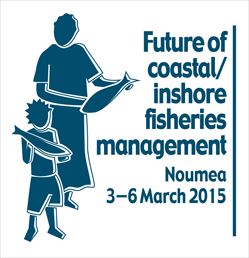
Selling shell jewellery, Central Markets, Honiara, Solomon Islands 2014. Photo: Kate Barclay
The Secretariat for the Pacific Community’s recent regional workshop on the “Future of coastal/inshore fisheries management,” 3 to 6 March 2015 included the role of women (along with youth and culture) in fisheries management as one of the main topics. Other topics included community based resource management, livelihoods and the private sector, and the role of tuna in food security.
Presenter Assoc. Prof. Kate Barclay from the University of Technology Sydney talked about including gender in fisheries management within broader approaches to fisheries management such as the Interactive Governance for Fisheries (see Fish for Life) approach. She argued that conventional fisheries management has a tunnel vision approach and that addressing the shortcomings of conventional fisheries management involves broadening the perspective of what is involved in resource governance to include social factors, including gender relations. This means fisheries agencies working in collaboration with other government agencies, as well as with various stakeholder groups, to cover the complex social issues affecting fisheries management.

Broadening the perspective to include gender relations and look at fisheries as social ecological systems means doing things differently. Two examples of changed approaches were presented. Danika Klieber’s work demonstrates that the tunnel vision of conventional fisheries management means renders invisible a significant amount of fishing activity, and shows how enumeration may be done differently to better include women’s fishing. The work by WorldFish in Solomon Islands has involved introducing gender transformative approaches, rethinking how consultation with fishing communities is conducted, and developing new methods to effectively engage with women, elicit their perspectives, and design projects that reflect women’s as well as men’s interests.
Kate Barclay’s presentation can be downloaded here.
This entry was posted in: Men, Women
